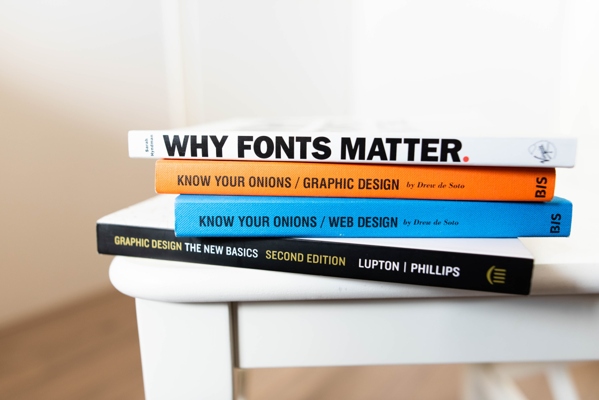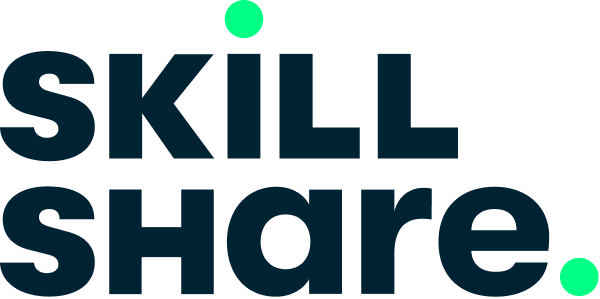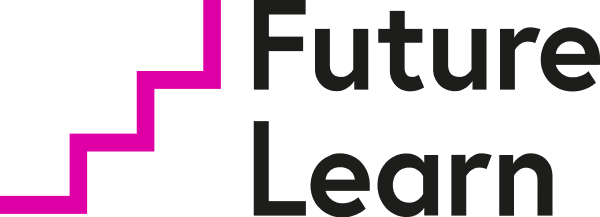Courses for Software Engineer
600+ courses
Forward Progress Guarantees in C++ - Olivier Giroux - CppNow 2023
In this talk, Olivier Giroux delves into the concept of Ford progress guarantees in C++. He begins by explaining why Ford progress guarantees are important, as they provide a way to reason about program behavior in a deterministic manner. Olivier then discusses how C++'s abstract machine and memory model impact the behavior of programs that use Ford progress guarantees, highlighting the differences between C++ and other programming languages. He also touches on the implications of C++'s unique features for other languages that may not have their own Ford progress guarantees. Throughout the talk, Olivier provides examples to illustrate how Ford progress guarantees work in practice and why they are essential for building reliable software. By the end of the talk, viewers will have a deeper understanding of Ford progress guarantees in C++ and how they can be used to create more robust and predictable programs.

Sherlock Homepage - A detective story about running large web services - Maarten Balliauw
In this session, Maarten Balliauw shares their story of debugging large web services, specifically the NuGet server. They discuss the challenges they faced, such as frequent downtime, slowdowns, and errors, and how they went about fixing those issues. The talk covers various topics, including troubleshooting, bug fixing, and performance optimization. Maarten also shares their experience in using a detective approach to identify and solve problems in the service.

Efficient Enumeration Algorithms via Circuits
The video discusses a new approach to enumerating query answers using circuits. The speaker explains that traditional methods of query evaluation are inefficient, so they propose using intentional query evaluation instead. This involves compiling queries into tractable classes of circuits like DSDNNF, UBDDs, and others, and then evaluating the circuit to retrieve the answer. The talk covers preliminaries and states the problem formally, followed by a detailed explanation of how this approach can be used for tasks like counting, weighted counting, and probability computation. The speaker also discusses how these results can be applied to enumeration on circuits in general, and how they can be used to improve efficiency. Finally, the video concludes with a summary of the key points covered.

FourQ on FPGA New Hardware Speed Records for Elliptic Curve Cryptography over Large Prime Character
The video begins by introducing the new 4Q F-bit elliptic curve, a joint work of four researchers from different institutions. The speaker explains that this curve offers much higher performance than traditional curves, with evidence from benchmarks showing it to be two or three times faster. The presentation then turns to the question of how suitable this curve is for efficient hardware implementation, and the challenges that come with employing four downloads in a scale of decomposition. The speaker also mentions that 4Q was introduced by Craig Costello and Patrick Longer last year, making it a relatively new curve. The video concludes by highlighting the security offered by this curve, which is over 120 bits, thanks to its twisted Edward's curve with a cardinality of the group and a prime size of 392 times 246 bits. The speaker emphasizes that it's a very nice curve from many perspectives.

20 CSS Tricks You Probably Haven't Used Before
Have you ever heard about line-clap, conic-gradient or adjacent sibling combinator? In my classes, you’re going to learn some new & not very popular CSS tricks and properties that will help you to level up your web design skills. The classes are divided into small and tasty CSS chunks every followed by practical examples and exercise. The classes will cover properties such as: line-clamp, CSS counter (styling ordered list), custom bullet points, multiple backgrounds, vw & vh units, column-count, text-stroke, gradient text and much more! The course is destined for everyone who has ever written a line of CSS code. If you’d like to start from the basics, I strongly recommend you to explore my previous classes: Full list of the properties I'm mentioning in the course: Gradient Text First letter Numbered list Multiple backgrounds Filter blur Font shorthand Truncate text Line-clamp Cross-Browser Text Selection Color Character Units Custom Bullet Points Object-fit Conic-gradient Drop-shadow <wbr> Text-stroke Adjacent Sibling Combinator General Sibling Combinator Viewport height and witdh units Column count RESOURCES https://atom.io/ https://developer.mozilla.org/en-US/docs/Web/CSS/General_sibling_combinator https://developer.mozilla.org/en-US/docs/Web/CSS/Adjacent_sibling_combinator https://developer.mozilla.org/en-US/docs/Web/HTML/Element/wbr

Anastasiia Tymoshchuk - Can we deploy yet?
The speaker begins by explaining that when working on projects in production, things can break easily. As a result, it's essential to make sure that your code is production-ready before deploying it. They share their experience as an organizer of Py Berlin meetups and how they've seen people struggle with this issue. The speaker then discusses the importance of testing and ensuring that code is reliable and scalable before deployment. They also emphasize the need to keep in mind the potential for things to break in production and to plan accordingly. The speaker concludes by inviting viewers to their next Pybrilimit app and encouraging them to share their experiences with the community.

The ULTIMATE Second Brain Setup in Notion
Thomas Frank explains his complete second brain setup inside of Notion in this video. He shows how he uses the app to track all of his tasks, projects, notes, goals, and organizes his entire life using Tiago Forte's Para Organization system. The system is an all-in-one tool that Thomas has wanted inside of Notion since 2018 when he discovered it. He captures items quickly when on the go, organizes his life, and gets things done with the help of the GTD workflow inside the system. The video provides an in-depth look at every single part of this system from an action-oriented standpoint, including skipping around or reviewing as needed. Thomas also mentions that he has turned this entire system into a template that can be added to a Notion workspace for easy use.

Michael Spencer: Alignment in C++: Use, Limitations, and Extension
In this video, Michael Spencer provides an in-depth analysis of alignment in C++, including its definition, limitations, and potential extensions. He explains that everything in C++ is defined in terms of SD-Maxeline-T, and how alignment requirements are stored in every context. The speaker discusses the two different alignment forms: fundamental alignment and extended alignment, and highlights the importance of understanding alignment in C++ programming. He also covers the potential issues with alignment, such as over-alignment, and the proposals for addressing these limitations. Throughout the video, Michael Spencer provides valuable insights into the nuances of alignment in C++ and how it can be used effectively in programming.

Javascript for Pythonistas
The video starts by thanking the audience and introducing the topic of learning JavaScript for Python developers. The speaker then shares their experience working with both languages and explains how they use their knowledge of Python to speed up development in JavaScript. They highlight some of the key differences between the two languages, including the lack of type system in JavaScript and the use of callbacks instead of function arguments. The speaker also covers topics such as syntax, variables, loops, and functions in JavaScript. Throughout the video, the speaker provides examples and explanations to help viewers understand the concepts being covered. They also encourage viewers to ask questions and share their own experiences with both languages.

React JS Tutorial For Beginners In Hindi | What Is React JS | React JS Training | Great Learning
In this tutorial, we will learn about React JS, a powerful or fastest growing JavaScript library. We will start with the basics of React and move on to its applications in various industries. Learn how to create a React application from scratch and understand how it is used by big companies like NASA and Facebook. Get introduced to the tools and techniques used in React development and how to use them to create your own applications. Whether you're a beginner or an experienced developer, this tutorial will help you learn the basics of React and its applications.

Breaking Down Your Build: Architectural Patterns For A More Efficient Pipeline - Abraham Marin-Perez
In this video, Abraham Marin-Perez covers the basics of architectural patterns for more efficient pipelines. He starts by discussing the importance of understanding the pipeline's architecture and how it can be optimized. He then delves into specific techniques such as using dependency management tools, implementing continuous integration and delivery, and organizing code for better maintainability. Abraham also shares his experiences working with different programming languages and how they have influenced his approach to pipeline design. Throughout the video, he emphasizes the importance of agile methodologies and how they can help organizations improve their workflow and productivity. By the end of the video, viewers should have a solid understanding of how to create more efficient pipelines and how to apply these principles in their own projects.

PROTOCOLS IN NETWORKING || TYPES OF PROTOCOLS || ARP || HTTP || TCP/IP || UDP || SMTP || SNMP || POP
In this video, we will explore the different types of networking protocols used in computer networks. We will start by explaining what protocols are and why they are important for networking. Then, we will delve into each of the specific protocols covered in the video, including ARP, HTTP, TCP/IP, UDP, SMTP, SNMP, and POP. We will discuss their functions, how they work together, and the differences between them. By the end of the video, viewers will have a solid understanding of the role these protocols play in enabling communication and data transfer within computer networks.

Dialogflow CX: Contextual Intents
In this lab you will learn how to use some advanced Dialogflow CX features, like how to let a user ask your virtual agent to repeat what it said; let the user ask common questions from your FAQ in the middle of another conversation; ask context-sensitive questions, and add conversational branching and looping based on current values in the session parameters.

Fast, Ever-Evolving Defenders: The Resilience Revolution
The video delves into the challenges of keeping up with cyberattackers who are constantly evolving. It highlights that defenders must transform into fast-evolving entities to outmaneuver attackers. The talk introduces practical ways for defenders to become more like attackers, such as being empirical, curious, and nimble. It also emphasizes the importance of understanding attacker advantages and adopting them to create a resilient defense system. By adopting these strategies, defenders can finally keep up with attackers and outmaneuver them.

Cypress Beginner Tutorial 9 | Assertions
In this video, we will explore assertions in Cypress. We will start by explaining the difference between implicit and explicit assertions, with examples of each. Implicit assertions are built-in and don't require any additional command, while explicit assertions need to be explicitly stated using the `expect` or `assert` command. We will then move on to hands-on examples of both types of assertions, demonstrating how to use them effectively in Cypress. Whether you're a beginner or an experienced user, this video will provide valuable insights into the world of Cypress assertions.

Java for Complete Beginners
The Course Where Programming and Fun Meet! Learn JAVA from Scratch With PLENTY of Free Resources and Challenges. What you'll learn: The Fundamentals of Objected Oriented ProgrammingSolid foundation in programmingAbility to solve challenging problems with codeWell rounded knowledge of Java Q: What will I learn in this course?Ans: You will learn the fundamentals of Java.We will initially learn about variables, conditions, loops, arrays, operators, and user input. Then we will take a closer look at classes, objects, and methods. Finally, we will go over the fundamentalsconcepts of Object-Oriented Programming: Inheritance, Encapsulation, Polymorphism, and Composition.We will not merely glance over these topics but get a thorough understanding of what they are, how they work with each other, and what rolethey play.Q: How will this course be taught?Ans: The videos will compromise of two parts: paper and computer. We will not directly dive into coding but rather gain an understanding of what the concept is and why it is important (on paper). Then we will move to the computer where I will lay out the syntax of the concept for you and give you ample examples and mini-challenges to strengthen your understanding of the concept.Additionally, I will link a document for each video which will go over what we learned and will include additional resources for you to check out. I will also link the source code for each video.Once you have a good understanding of the concept, there will be a video where I will present you with multiple challenges at the start of the videoand spend the rest of the video solving each challenge I presented,explaining every line of codeand the general logic of the solution.By the end of this course, I hope that you have a good grasp of the concepts introduced in this course and are able to utilize them effectively.

Introduction to Web Development
Are you Interested in Learning Web Development? Enroll in this Free course for a Dynamic Introduction to the Profession! What you'll learn: Understand the technologies used in web developmentIdentify the tools used by web developersApply HTML document structureWrite HTML allowing you to display a simple web pageAdd images to a web pageUnderstand the role of CSS in web developmentUnderstand the HTML/CSS color modelApply colors to web page elementsAlter CSS text propertiesUnderstand and apply the basics of the CSS box modelKnow the role of Javascript programming in web developmentIntegrate prewritten Javascript codeCreate a basic Javascript program to collect dataUse Javascript to adjust the appearance of page elementsUnderstand the next steps to learning professional web development skills Are you considering web development as a career? Do you simply want to learn to create your own web sites but don't know where to start? Does the world of programming fascinate you? Are you curious about "what it takes" to be a web developer. Join master instructor Mark Lassoff, for this fast-paced, short course designed to introduce you to the world of web development. You'll be introduced to three of the primary languages used for web development. Exposure to Three Major Programming LanguagesFirst, Mark will introduce you to HTML5, HyperText Markup Language, used to contain the content elements of web and mobile sites. Next, you'll be introduced to CSS, Cascading StyleSheet Language, used to add design and style to web presentations. Finally, Mark will introduce you to Javascript, one of the most important and fastest-growing languages used today. Dynamic Course Design This course is designed to give you a preview of what professional web development work is like. You'll use some of the same languages and techniques used by professional web developers every day. With fascinating, fast-paced lectures, code samples, and challenging lab exercises (solutions provided), you'll gain a sense of what it's like to work in the web development field. Thousands have learned web development and programming from Mark Lassoff. Join Introduction for Web Development today and start your path toward mastering this exciting and challenging field.

EmacsConf 2019 - 03 - Emacs Development Update - John Wiegley (johnw)
John Wiegley (johnw) gives a presentation on the current state of Emacs development, focusing on what's new in Emacs 27. Nearly all of the information comes from Elie Zerezky, who has taken on most of the maintainer duties due to John's absence. The presentation covers topics such as updates to the user interface, improvements to performance, and new features. John mentions that he hasn't been very involved in Emacs development lately and that Elie is now handling most of the work. The video provides a comprehensive overview of the current state of Emacs development.

Programming Essentials with Python: Source Code and Solutions Architecture
What does programming involve, what are the most commonly used programming languages, and what are their applications? This introductory course will teach you the fundamentals required to become a successful programming professional. You’ll learn Python programming essentials and find out why the software has grown in popularity. What is Python used for? A beginner’s programming guide Many of the world’s biggest online companies, including Google, Dropbox and Instagram, heavily rely on Python to program their back-end. It’s also widely used by scientists, mathematicians, and in academia. But what is Python programming and why is it so popular? The course will teach you the fundamentals of this programming language, and programming in general. You’ll learn how Python is installed and set up. And you’ll find out how to install libraries in Python and gain an understanding of code execution. Understand how to use source code in programming First, you’ll learn about source code programming in the context of coding. You’ll examine the types of errors that may occur, and how to troubleshoot and fix them. You’ll learn about code flows, including loops and conditions, along with sequential, conditional and branching code flows. You’ll also develop your understanding of variables and data types, symbols and operators, plus keywords and identifiers. Learn how solutions architecture relates to programming As well as covering the basics of programming for beginners, you’ll also examine how a solutions architect helps organisations to develop new applications for services. You’ll look at the role, processes and responsibilities of solutions architects and how they’re integral to solving technical business problems, before getting to grips with the basics of how solutions architecture works. This course is designed for professionals looking to build confidence in Python and other programming languages. It’s ideally suited to career-changers seeking a programming role, established technology professionals, and tech team leaders. On this course we’ll be using Python. We recommend you use a computer to access these elements.

Matteo Guzzo - Easy interactive data applications with Dash
Mateo Guzzo's video on 'Matteo Guzzo - Easy interactive data applications with Dash' covers the basics of creating interactive data visualizations using the Python library Dash. Mateo, a physicist-turned-data scientist, provides an introduction to Dash and demonstrates how to create various types of visualizations, including line plots, bar charts, and scatter plots. He also shares his background and experience in transitioning from academia to data science. The video covers the essential topics of data visualization and how to use Dash to create interactive applications with ease.

Anastasia Opara - Rust for Artists. Art for Rustaceans. — RustFest Global 2020
Anastasia Opara, a procedural artist at Embark Studios, delves into the fascinating world of art and programming. She discusses her journey as a creator, highlighting the unique challenges and opportunities that come with blending these two disciplines. Throughout the presentation, Anastasia shares practical examples from her work, demonstrating how she uses Rust to generate art and grow algorithms. She also touches upon the meta aspect of the talk, exploring similarities between art and programming. The presentation ends with a Q&A session where Anastasia answers questions from the audience.

Getting Started with Spatial Analysis in GeoDa
By the end of this project, learners will know how to start out with GeoDa to use it for spatial analyses. This includes how to access and download the software, import multiple layers, and a basic overview of GeoDa. Spatial analysis, as a type of data analysis, has been getting increasingly important. The beginnings are often dated back to John Snow’s cholera outbreak maps from the mid-1800s. In 2003, Dr. Luc Anselin at the University of Chicago developed GeoDa, together with his team, to provide free software that digitizes old school pin maps. Today, it is used in various fields to plan cities and infrastructure, create crime maps, emergency management, and visualize finds at archaeological sites. Note: This course works best for learners who are based in the North America region. We’re currently working on providing the same experience in other regions.

AI Reliability in Security: A New Data Science Paradigm
The video covers the topic of AI reliability in security, exploring how it is a new data science paradigm. The speaker explains that AI reliability is crucial for maintaining security, as it helps identify potential issues before they become major problems. They introduce proposed mathematical models for measuring AI reliability, including mean time to decay and TDD. The video also discusses the importance of establishing baseline monitors in DevOps and MLOps to ensure AI reliability. The speaker highlights that these monitors are the foundation of AI reliability and will help the audience understand how to implement key monitors in their own systems.

"Snek: A Python-Inspired Language for Tiny Embedded Computers" - Keith Packard (LCA 2020)
Keith Packard talks about his project teaching grades 5-7 students programming through building robots with Lego and attaching computers to them. He covers the subjects of Python-inspired language for tiny embedded computers, educating children in programming, and working with an experienced educator. The talk focuses on the fun and exciting experience of teaching children programming through hands-on activities like building robots.

Choosing a JavaScript Framework - Rob Eisenberg
Rob Eisenberg presents a comparison of six JavaScript frameworks, including Angular, React, Vue.js, Ember, Aurelia, and Polymer. He discusses the strengths and weaknesses of each framework and provides insights into their development methodologies, philosophies, and communities. The talk covers technical aspects such as architecture, syntax, and tooling, as well as broader questions about project management, team collaboration, and business considerations. Eisenberg also offers his own recommendations for how to approach these frameworks in terms of which ones to use and when. He highlights the differences between the frameworks and encourages viewers to evaluate each one based on their specific needs and goals.

Separating Semantic and Circular Security for Symmetric Key Bit Encryption from the Learnin
In this video, we explore the ideas of semantic and circular security for symmetric key bit encryption. We investigate what these terms imply regarding the security assumptions made by the encryption scheme and how they can help safeguard against unlawful access to encrypted data. We begin by defining the notion of semantic security, which asserts that an adversary cannot identify a specific secret key without knowing its value. We then examine the idea of circular security, which contends that if the adversary has some knowledge of the secret key, they still cannot distinguish between encryption of two different messages. We also consider situations in which the adversary knows some encryption of a portion of the secret key and discuss how these concepts can help protect against attacks. Overall, this video provides an overview of the fundamental principles of semantic and circular security for symmetric key bit encryption.

When to use UDP vs TCP in Building a Backend Application?
In this video, Hussain covers the basics of UDP and TCP protocols and how they are used in backend development. He explains that UDP is a connectionless protocol that provides lower latency but less reliability, while TCP is a connection-oriented protocol that provides higher reliability but higher latency. Hussain also discusses when to use each protocol based on the application's requirements. He emphasizes that understanding the fundamentals of these protocols is essential for choosing the right one for your application. The video covers topics such as HTTP, GRPC, and XMPP, and how they are built on top of UDP or TCP. Hussain encourages viewers to understand how these protocols work and choose the right one based on their application's requirements.

The Brain and Consciousness: A Journey Through Neuroscience
Professor Kreek delves into the intricacies of the human brain and consciousness in this lecture. He begins by discussing the brain's non-biological basis, highlighting its unique properties that set it apart from other biological organisms. The lecture then shifts focus to the development of the field of neuroscience, including the role of Professor Kreek himself in founding the vaccine course in 1988. He also touches on the mind-spain machine and its applications in neurology, showcasing the latest advancements in the field. Throughout the lecture, Professor Kreek's passion for neuroscience is evident, as he shares his extensive knowledge with the audience.

hop: A Language to Design Function-Overload-Sets - Tobias Loew - [CppNow 2021]
The video explores the concept of homogeneous variadic functions in C++ and introduces the 'hop' language for designing and defining function overload sets. The speaker explains how homogeneous variadic functions can simplify code and make it more expressive, but also discusses their limitations. They then delve into the details of hop, showing how it allows developers to create a function parameter building block system and define overload sets from them. The video also provides examples of using hop and looks at its internals. Finally, the speaker discusses some of the advanced features of hop, such as its ability to handle functions with multiple return types and its support for homogeneous variadic templates.

24 Hours of PASS: Open Questions and Answers on Azure SQL Database
Join us for an open question and answer session on Azure SQL Database with the Microsoft team. Today's panel consists of Scott Kline, Bill Gibson, and Joanne Maroon. They will be answering questions on various topics such as database design, security, performance, and more. This event is part of 24 Hours of Pass, a series of live webcasts featuring experts in the field of Azure SQL Database. Don't miss out on this opportunity to learn from the best and get your questions answered.





